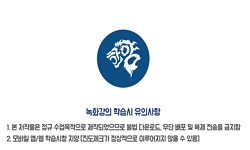이 글은 잡지 한양(漢陽)과 코리아평론(コリア評論)을 통해 1970년대 초, 데탕트 정세와 남북한 통일문제를 재일조선인 사회가 어떻게 바라보았고, 그들의 통일 논의의 특징은무엇인지 살펴...
http://chineseinput.net/에서 pinyin(병음)방식으로 중국어를 변환할 수 있습니다.
변환된 중국어를 복사하여 사용하시면 됩니다.
- 中文 을 입력하시려면 zhongwen을 입력하시고 space를누르시면됩니다.
- 北京 을 입력하시려면 beijing을 입력하시고 space를 누르시면 됩니다.

1970년대 초 『漢陽』·『コリア評論』의 한반도 정세 인식과 통일론 = The Perception of the Korean Peninsula’s Situation and Discussion of Unification in the Magazines HanYang(漢陽) and Korea-Pyongron(コリア評論) in the Early 1970s
한글로보기부가정보
국문 초록 (Abstract)
둘째, 코리아평론은 1950년대 이래 일관되게 중립화통일론을 견지했다. 그러나 데탕트 국면에 담긴 강대국들의 현상 유지 바람과 그로 인해 역설적으로 한반도 분할이 장기화할 수있다는 사실을 간파했다. 그에 대한 해법으로 민족의 주체적 자주성을 강조하면서 코리아평론의 중립화통일론은 통일의 방식을 넘어 자세와 의지의 차원으로 확대되었다. 셋째, 한양과 코리아평론은 공통적으로 통일 논의의 자유와 확대를 강조했다. 이 점은 한국 정치 현실에 대한 비판적 시선으로 이어졌다. 또한 이들의 통일론은 1970년대 일본에서 한국민주화에 대한 관심이 고조되고 한일 연대가 활성화되는 길목에 있었다.
이 글은 잡지 한양(漢陽)과 코리아평론(コリア評論)을 통해 1970년대 초, 데탕트 정세와 남북한 통일문제를 재일조선인 사회가 어떻게 바라보았고, 그들의 통일 논의의 특징은무엇인지 살펴보았다. 첫째, 한양은 단계론적 통일론을 경계하면서 사상과 주의를 초월한민족의 지상과제이자 당위로서의 통일을 주장했다. 그것은 단순한 이상주의가 아닌 현실인식이 투철한 통일론이었고, 재일조선인들의 통일에 대한 열망이 담긴 통일론이기도 했다.
둘째, 코리아평론은 1950년대 이래 일관되게 중립화통일론을 견지했다. 그러나 데탕트 국면에 담긴 강대국들의 현상 유지 바람과 그로 인해 역설적으로 한반도 분할이 장기화할 수있다는 사실을 간파했다. 그에 대한 해법으로 민족의 주체적 자주성을 강조하면서 코리아평론의 중립화통일론은 통일의 방식을 넘어 자세와 의지의 차원으로 확대되었다. 셋째, 한양과 코리아평론은 공통적으로 통일 논의의 자유와 확대를 강조했다. 이 점은 한국 정치 현실에 대한 비판적 시선으로 이어졌다. 또한 이들의 통일론은 1970년대 일본에서 한국민주화에 대한 관심이 고조되고 한일 연대가 활성화되는 길목에 있었다.
다국어 초록 (Multilingual Abstract)
As a solution, it emphasized the independence of the nation, expanding its neutralization-based unification argument beyond the methods of unification and into the realms of attitude and determination. Finally, both HanYang and Korea-Pyongron shared a common emphasis on freedom and broadening scope of unification discourse, which was intertwined with a critical perspective on the political reality in Korea. Moreover, their discussion of unification was on the path to heightened interest in the Korean democratization movement in Japan in the 1970s and to the movement of Korea-Japan solidarity.
This article explores how the Koreans in Japan perceived the Korean Peninsula’s political situation and discussion of unification in the early 1970s by examining the magazines HanYang(漢陽) and Korea-Pyongron(コリア評 論). First, HanYang advo...
This article explores how the Koreans in Japan perceived the Korean Peninsula’s political situation and discussion of unification in the early 1970s by examining the magazines HanYang(漢陽) and Korea-Pyongron(コリア評 論). First, HanYang advocated for unification as a national imperative and aspiration that transcends ideological and political divisions. This vision was not a mere idealism, but an argument based on a thorough awareness of reality. It also reflected the fervent desire for unification among the Korean residents in Japan. Second, Korea-Pyongron had consistently adhered to the argument of neutralization and unification. However, it recognized the prevailing desire of major powers to maintain the status quo during the détente, which paradoxically could lead to a prolonged division of the Korean Peninsula.
As a solution, it emphasized the independence of the nation, expanding its neutralization-based unification argument beyond the methods of unification and into the realms of attitude and determination. Finally, both HanYang and Korea-Pyongron shared a common emphasis on freedom and broadening scope of unification discourse, which was intertwined with a critical perspective on the political reality in Korea. Moreover, their discussion of unification was on the path to heightened interest in the Korean democratization movement in Japan in the 1970s and to the movement of Korea-Japan solidarity.
참고문헌 (Reference)
1 李美淑, "「日韓連帶運動」の時代" 東京出版会 2018
2 崔慶原, "冷戰期日韓安全保障関係の形成" 慶應義塾大学出版会 2014
3 한승헌변호사변론사건실록간행위원회, "한승헌 변호사 변론사건실록 2" 범우사 2006
4 조배준, "한반도 중립화 통일방안에 대한 반성적 고찰" 인문학연구원 61 : 89-118, 2015
5 홍석률, "통일문제와 정치·사회적 갈등 : 1953-1961" 서울대학교출판부 2001
6 홍석률, "중립화통일 논의의 역사적 맥락" (12) : 53-88, 2004
7 강광식, "중립화 통일론의 역사적 전개와 그 적용" 30 (30): 39-70, 1990
8 "조선일보"
9 이종석, "조선로동당연구" 역사비평 1997
10 동의대학교 동아시아연구소, "전후 재일조선인 마이너리티 미디어 해제 및 기사명 색인 1~3" 박문사 2018
1 李美淑, "「日韓連帶運動」の時代" 東京出版会 2018
2 崔慶原, "冷戰期日韓安全保障関係の形成" 慶應義塾大学出版会 2014
3 한승헌변호사변론사건실록간행위원회, "한승헌 변호사 변론사건실록 2" 범우사 2006
4 조배준, "한반도 중립화 통일방안에 대한 반성적 고찰" 인문학연구원 61 : 89-118, 2015
5 홍석률, "통일문제와 정치·사회적 갈등 : 1953-1961" 서울대학교출판부 2001
6 홍석률, "중립화통일 논의의 역사적 맥락" (12) : 53-88, 2004
7 강광식, "중립화 통일론의 역사적 전개와 그 적용" 30 (30): 39-70, 1990
8 "조선일보"
9 이종석, "조선로동당연구" 역사비평 1997
10 동의대학교 동아시아연구소, "전후 재일조선인 마이너리티 미디어 해제 및 기사명 색인 1~3" 박문사 2018
11 홍석률, "분단의 히스테리" 창비 2012
12 통일부 통일교육원, "분단 이후 제기된 통일담론에 대한 정리와 성찰"
13 고명철, "민족의 주체적 근대화를 향한 한양의 진보적 비평정신― 1960년대의 비평 담론을 중심으로" 한민족문화학회 (19) : 247-278, 2006
14 권헌익, "또 하나의 냉전" 민음사 2013
15 조은애, "디아스포라의 위도" 소명출판 2021
16 김지형, "데탕트와 남북관계" 선인 2008
17 서울대학교 국제문제연구소, "글로벌 냉전의 지역적 특성" 사회평론 2015
18 윤건차, "교착된 사상의 현대사" 창비 2009
19 "경향신문"
20 言論人金三奎刊行委員會, "言論人 金三奎"
21 "漢陽"
22 李瑜煥, "在日韓国人60万 : 民団·朝総連の分裂史と動向" 洋々社 1971
23 "コリア評論"
24 손남훈, "『한양』 게재 시편의 변화 과정 연구 - 庚連과 鄭英勳의 시를 중심으로" 한국문학회 (70) : 137-188, 2015
25 손남훈, "『민족의 존엄 』에 나타난 민족 주체성 담론과 정치 비판의 논리" 한민족문화학회 80 (80): 127-160, 2022
26 한모니까, "DMZ의 역사 : 한반도 정전체제와 비무장지대" 돌베개 2023
27 임헌영, "74년 문인간첩단 사건의 실상" (13) : 283-301, 1990
28 홍석률, "4월민주항쟁기 중립화통일론" (10) : 65-106, 1993
29 홍석률, "1970년대 민주화 운동세력의 분단문제 인식 ―분단시대론과 분단체제론―" 한국역사연구회 (93) : 467-504, 2014
30 하상일, "1960년대 漢陽 소재 재일 한인 시문학 연구" 한국문학회 (47) : 201-227, 2007
31 하상일, "1960~80년대 재일(在日) 종합문예지 『한양』과 한국문학의 교섭" 한민족문화학회 77 (77): 7-42, 2022
동일학술지(권/호) 다른 논문
-
성격이 통일과 분단에 대한 태도에 미치는 영향: 고착화된 갈등 국가 사례 연구
- 서울대학교 통일평화연구원
- 이유정
- 2023
- KCI등재
-
김정은 정권 음악 정책의 논리 : ‘음악정치’의 함의 확대와 ‘사회주의 문명국’ 개념을 중심으로
- 서울대학교 통일평화연구원
- 모리토모오미
- 2023
- KCI등재
-
- 서울대학교 통일평화연구원
- 전영선
- 2023
- KCI등재
-
‘선군 투사’에서 ‘과학기술 룡마 기수’로: 김정은 시대 문학의 대표 전형
- 서울대학교 통일평화연구원
- 김성수
- 2023
- KCI등재




 KCI
KCI KISS
KISS





